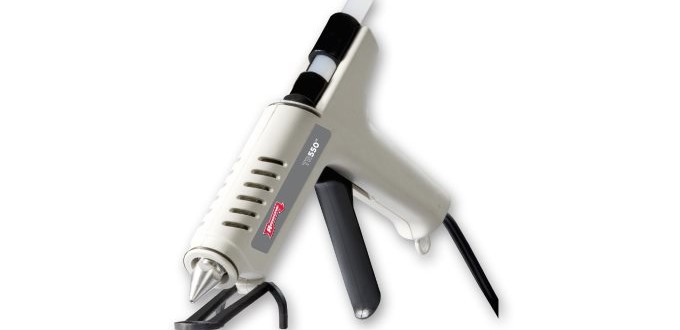In order to complete the LED Cube project I’ve been working on I decided I needed a glue gun to hold the LED’s in place. I could probably have used epoxy or even silicon sealant as there was no real weight to hold but I never miss the opportunity to buy a new tool.
After asking around I decided to get a Arrow TR550 and half a dozen Arrow branded 250mm general purpose glue sticks. I forget where I bought it but I know Axminster sell this model. Total price was a little under £25. If you stick “glue gun” into Google you’ll undoubtedly turn up Glue Guns Direct. I very nearly just bought a gun from them but after doing a little research I noticed that they are very expensive compared to most other places for what appears to be a pretty standard tool.
So what can I say about a glue gun…
It comes packaged in a clam shell but, thankfully, it uses molded poppers rather than a heat sealing so there’s no chopping your arm off trying to open the thing with a knife. In the pack is the gun and a single sheet of paper with instructions in several languages. Being American in origin the languages reflect those found on that side of the pond rather than the European languages most things you buy here contain. That shouldn’t be much of a problem though as it’s not like it’s a complicated device.
The instructions did state that it would take about two 100mm sticks of glue to initially fill the glue chamber so I figured on using most of a 250mm stick on the initial run. In actual fact I used less than a third of a stick to fill the melt chamber so I’m not sure where that two stick note was getting it’s figures from.
This is a single temperature glue gun taking hot melt sticks so it’s ideal for wood work and gluing other hard items but not so good for fabric and other temperature sensitive items. From cold to usable is about two minutes although I have to admit I didn’t time it – it was fast enough that by the time I’d finished tidying my bench and moving my work piece into place it was ready to go.
Glue comes out easily with gentle pressure on the full hand lever and it’s fairly simple to control the flow rate from a thin line to a thick line. It’s delivery rate isn’t fast enough to use it on a production line but more than fast enough for everything else. The gun comes with a built in stand which flips back when in use. There’s a little trough in the stand to catch any glue drips but I found the gun didn’t drip so I can’t comment on how useful that is. The device is mostly plastic but it’s sturdily put together and over all I’m pleased with the build quality for such a cheap tool.
To test the strength of the glue joint I stuck together two pieces of scrap wood: a 75x30x12mm piece of ply to a warped piece of T&G floorboard. I put a thin snaking bead of glue onto the floorboard and pressed the ply on and left it for a coupe of minutes. The two pieces were so strongly bonded I’d need to chisel them apart and would undoubtedly break the wood before I broke the glue bond. For everyday wood working this type of glue isn’t appropriate as the glue joint is quite thick and obvious but for jig making or other quick jobs it would be perfect.
